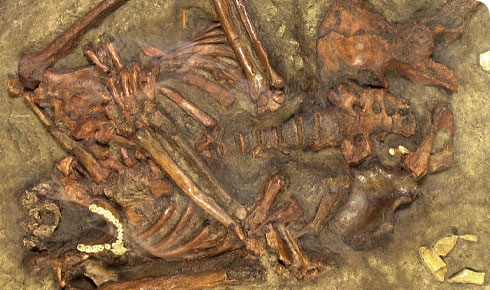Taxonomy
Similar to Homo sapiens skeletally but the pelvis was more primitive in shape, broad and with an extended and thinner superior pubic ramus.
The cranium was long and relatively low, with a double-arched supraorbital torus and a large nose, accompanied by mid-facial projection. The anterior mandible lacked the full development of a chin.
Morphology
Distinct in trunk shape and limb proportions, some of which may reflect cold adaptation.
Diagnostic description
Cranium displays mid-facial projection anteriorly, and a suprainiac fossa posteriorly.
Evolution
Fossil and genetic data suggest that Neanderthals shared a common ancestor with Homo sapiens in the Middle Pleistocene (perhaps the species Homo heidelbergensis).
Primitive/ancestral Neanderthals are known from about 400,000 years ago, while the best-known examples date from between 35-130,000 years ago.
Genetics
Whole mitochondrial (mtDNA) genomes have been sequenced, indicating that Neanderthals represented a distinct lineage from all recent humans, with an inferred Middle Pleistocene divergence date. The newly published composite Neanderthal genome indicates a level of about 2% introgression of Neanderthal genes in modern humans outside Africa, perhaps from geneflow in the middle east about 60,000 years ago.
